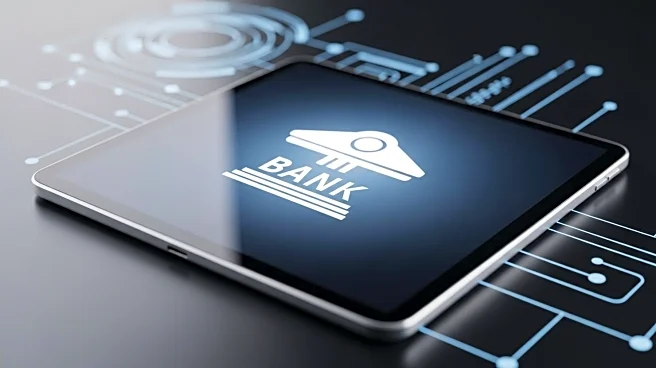What's Happening?
The Bank of Punjab (BOP) is leveraging digital technology to expand its lending services to small and medium enterprises (SMEs) and the agricultural sector in Pakistan. This initiative is part of a broader trend where digital tools are being used to overcome traditional barriers in lending, such as high costs and risks associated with small-ticket borrowers. The BOP has implemented a fully digital process for loan applications, credit underwriting, and disbursement, which has significantly increased the number of borrowers and the volume of loans. The bank's efforts have resulted in a 41% increase in SME financing and a 16.3% rise in agriculture credit over the past fiscal year. The digital approach has also improved the recovery rate of loans, with the BOP reporting a 96.4% recovery rate, surpassing industry averages.
Why It's Important?
The digitalization of lending processes by the Bank of Punjab is crucial for enhancing financial inclusion in Pakistan, particularly for SMEs and farmers who have historically been underserved by traditional banking systems. By automating credit approvals and leveraging partnerships with fintechs and government agencies, the BOP is able to offer more accessible and efficient financial services. This not only supports economic growth by empowering small businesses and farmers but also sets a precedent for other banks to adopt similar digital strategies. The success of these initiatives could lead to a more competitive banking sector, driving further innovation and potentially reducing the cost of credit for borrowers.
What's Next?
The Bank of Punjab plans to continue refining its digital lending models, with a focus on adapting to the specific needs of different borrower segments. This includes ongoing collaboration with international firms to enhance AI-driven credit decision models. The bank aims to expand its digital infrastructure and partnerships to further scale its lending operations. As digital lending becomes more integral to the banking sector, other financial institutions may follow suit, potentially leading to widespread adoption of digital tools in the industry. The government’s support will be crucial in facilitating this transition and ensuring that digital lending can be scaled effectively across the country.
Beyond the Headlines
The shift towards digital lending raises important considerations regarding data privacy and security, as banks increasingly rely on digital platforms and external partnerships. Ensuring robust cybersecurity measures and transparent data handling practices will be essential to maintain customer trust. Additionally, the integration of digital lending models could lead to changes in employment within the banking sector, as traditional roles may evolve or become obsolete. The ethical implications of AI-driven credit decisions also warrant attention, as these systems must be designed to avoid biases and ensure fair access to credit for all potential borrowers.










